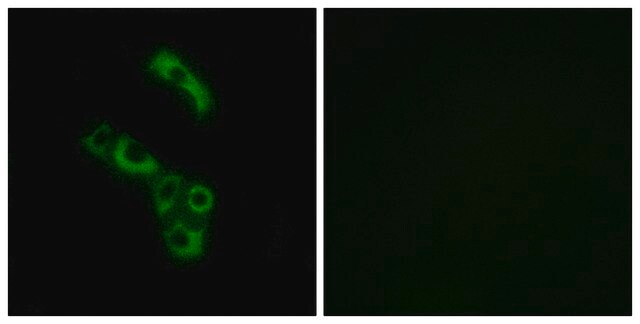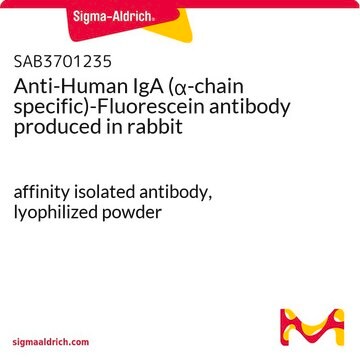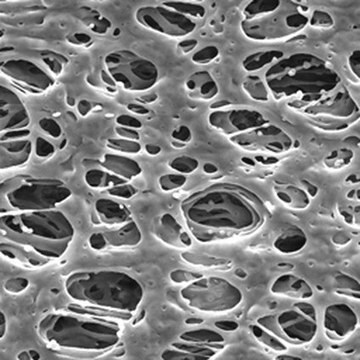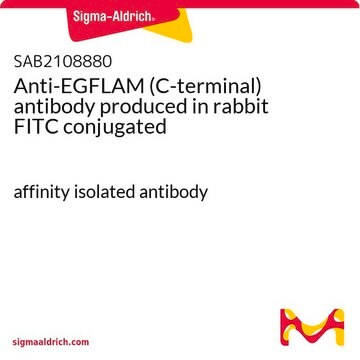MABC1592
Anti-SAP-1 Antibody, clone 123
clone 123, from rat
Synonyme(s) :
Receptor type protein tyrosine phosphatase sap-1, Stomach-cancer–associated protein tyrosine phosphatase 1, SAP-1
About This Item
Produits recommandés
Source biologique
rat
Niveau de qualité
Forme d'anticorps
purified immunoglobulin
Type de produit anticorps
primary antibodies
Clone
123, monoclonal
Espèces réactives
mouse
Ne doit pas réagir avec
human
Technique(s)
immunofluorescence: suitable
immunohistochemistry: suitable
immunoprecipitation (IP): suitable
western blot: suitable
Isotype
IgG1κ
Numéro d'accès UniProt
Conditions d'expédition
ambient
Modification post-traductionnelle de la cible
unmodified
Informations sur le gène
human ... PTPRH(5794)
mouse ... Ptprh(545902)
Description générale
The previously assigned protein identifier B6ZDS3 has been merged into E9Q0N2. Full details can be found on the UniProt database.
Spécificité
Immunogène
Application
Apoptosis & Cancer
Immunofluorescence Analysis: A representative lot detected SAP-1 in Immunofluorescence applications (Sadakata, H., et. al. (2009). Genes Cells. 14(3):295-308; Murata, Y., et. al. (2015). Proc Natl Acad Sci USA. 112(31):E4264-71).
Immunofluorescence Analysis: A representative lot detected SAP-1 in ileum from 8-week old WT mouse (Courtesy of Yoji Murata, Ph.D. and Takashi Matozaki, M.D., Ph.D. Kobe University Graduate School of Medicine, Japan).
Immunoprecipitation Analysis: A representative lot detected SAP-1 in Immunoprecipitation applications (Murata, Y., et. al. (2015). Proc Natl Acad Sci USA. 112(31):E4264-71).
Immunohistochemistry Analysis: A representative lot detected SAP-1 in Immunohistochemistry applications (Sadakata, H., et. al. (2009). Genes Cells. 14(3):295-308; Murata, Y., et. al. (2015). Proc Natl Acad Sci USA. 112(31):E4264-71).
Western Blotting Analysis: A representative lot detected SAP-1 in Western Blotting applications (Sadakata, H., et. al. (2009). Genes Cells. 14(3):295-308; Murata, Y., et. al. (2015). Proc Natl Acad Sci USA. 112(31):E4264-71).
Qualité
Western Blotting Analysis: 1 µg/mL of this antibody detected SAP-1 in 10 µg of lysate from HEK293A cells transfected with murine SAP-1.
Description de la cible
Forme physique
Stockage et stabilité
Autres remarques
Clause de non-responsabilité
Vous ne trouvez pas le bon produit ?
Essayez notre Outil de sélection de produits.
Code de la classe de stockage
12 - Non Combustible Liquids
Classe de danger pour l'eau (WGK)
WGK 1
Certificats d'analyse (COA)
Recherchez un Certificats d'analyse (COA) en saisissant le numéro de lot du produit. Les numéros de lot figurent sur l'étiquette du produit après les mots "Lot" ou "Batch".
Déjà en possession de ce produit ?
Retrouvez la documentation relative aux produits que vous avez récemment achetés dans la Bibliothèque de documents.
Notre équipe de scientifiques dispose d'une expérience dans tous les secteurs de la recherche, notamment en sciences de la vie, science des matériaux, synthèse chimique, chromatographie, analyse et dans de nombreux autres domaines..
Contacter notre Service technique








